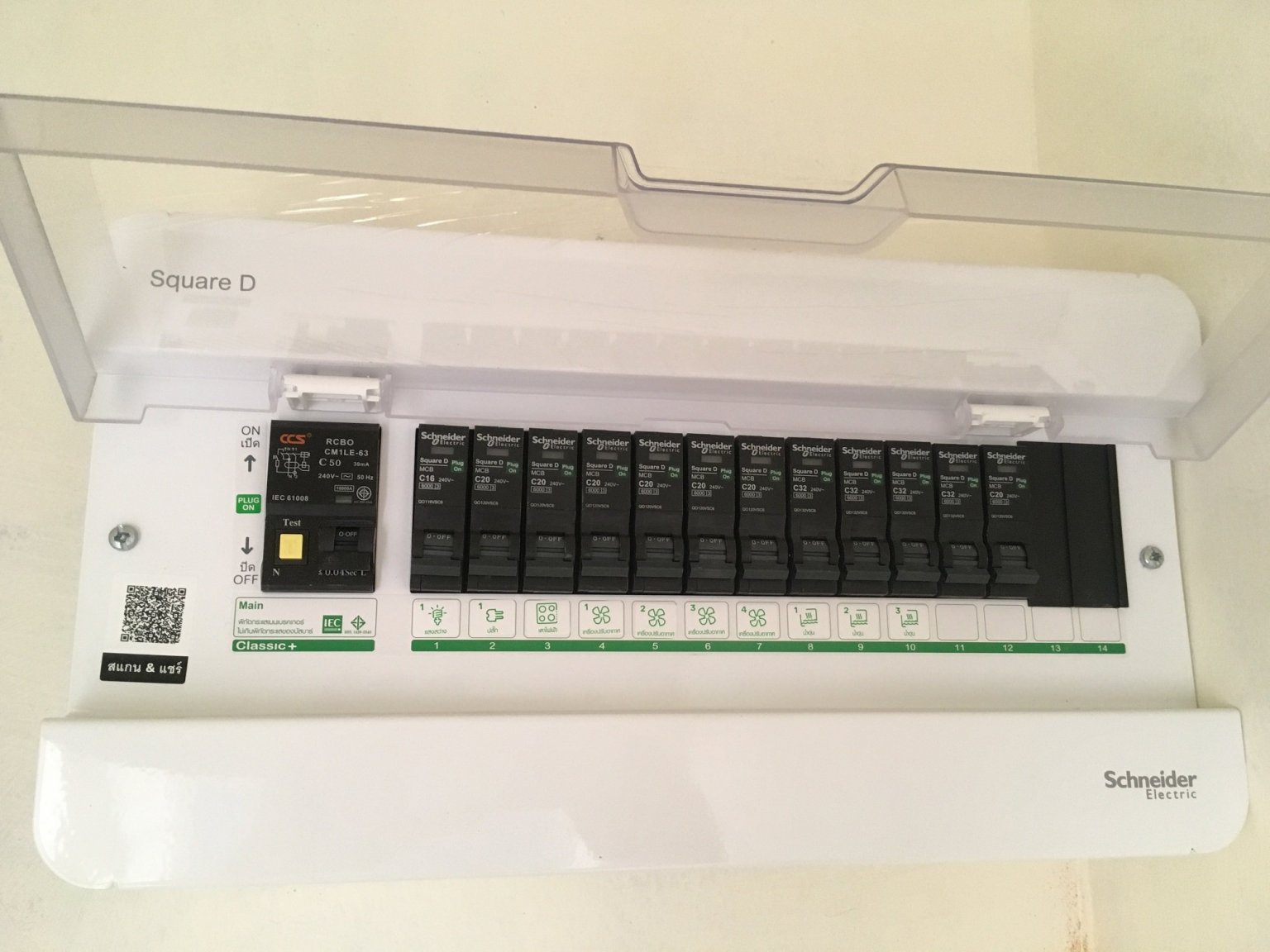
unheard
Advanced Member-
Posts
1,244 -
Joined
-
Last visited
Content Type
Events
Forums
Downloads
Quizzes
Gallery
Blogs
Everything posted by unheard
-
My understanding is that the attached breaker labels indicate the type of the connected circuit. It seems there are 4 unconnected breaker slots left. I thing I should ask them to put the fridge on its own circuit. Maybe with RCBO? Will it work when the main breaker is of the RCBO kind?
-
-
Electric Capture Surge Protection Device
unheard replied to Bangkokhatter's topic in The Electrical Forum
You're a brave man! Please keep us posted. -
The Lab: https://www.testtech.co.th/th Tests for the following: pH, Turbidity, Color, Total Hardness, Chloride, Total Iron, Manganese, Nitrate, Sulfate, Total Dissolved Solids, Arsenic, Cadmium, Copper, Lead, Mercury, Selenium, Zinc, Cyanide, Fluoride, Non Carbonate Hardness, Standard Plate Count, Coliform Bacteria, E. coli
-
Electric Capture Surge Protection Device
unheard replied to Bangkokhatter's topic in The Electrical Forum
Did they refuse to give you even a basic overview of the principles behind their electricity savings claim? -
Bank Requirements for Non-O Based on Marriage
unheard replied to EdwardM's topic in Thai Visas, Residency, and Work Permits
Do you mean to keep the money as a precaution in case the office decides to check if they money still in the bank on the date of the final stamp? As I understand there's no official requirement in the law. Will they at least advise during the application time if their office has such requirement? Are there actual reported cases on this board of such events? I understand that everything is up to the local office. Haven't heard of anything concrete so far on which offices were involved if any. -
Bank Requirements for Non-O Based on Marriage
unheard replied to EdwardM's topic in Thai Visas, Residency, and Work Permits
Can the money be withdrawn from the account after the date of application submission? -
Reducing my house electricity costs – any advice please .
unheard replied to Custard boy's topic in The Electrical Forum
A balancing act or priorities. Costs over conveniences. -
Reducing my house electricity costs – any advice please .
unheard replied to Custard boy's topic in The Electrical Forum
Oh, I see. So you use them like regular bulbs then?? You said that you got WiFi bulbs for the purpose of controlling them from the phone and on schedule? Do you keep the bulbs on a "hybrid" schedule? By cutting their juice off during the day, and then flipping the physical switch on in the evening to let them function according to the night time schedule? -
Reducing my house electricity costs – any advice please .
unheard replied to Custard boy's topic in The Electrical Forum
Then you don't really know what's their standby power consumption. Unless you test them with a specialized tool. A cheapo watt meter won't cut it. You've mentioned that you turn your bulbs off during the daytime.. Why would it matter as in reference to the standby power consumption metric? -
Reducing my house electricity costs – any advice please .
unheard replied to Custard boy's topic in The Electrical Forum
How long ago and for how many sq.m.? Did you mean insulating the ceiling? The only thing for sure is that today's prices would be significantly higher. -
Reducing my house electricity costs – any advice please .
unheard replied to Custard boy's topic in The Electrical Forum
Let's get real here. The OP is not building a new house! There are lots of suggestions mentioned in this thread that will require a major capital investment. Just to save a few baht on the already small electrical bill? -
Reducing my house electricity costs – any advice please .
unheard replied to Custard boy's topic in The Electrical Forum
"The one air conditioning unit is only used for a short time before going to sleep and does not run all night or during the day time." @Custard boy Make sure to keep your A/C components free of dust, both inside and outside units. -
Reducing my house electricity costs – any advice please .
unheard replied to Custard boy's topic in The Electrical Forum
My previous quote was referring to the maximum allowable under the Energy Star Logo spec. The U.S. and Canada sold LEDs tend to be of the highest available quality products currently on the market. Your particular samples can consume much more than the allowable maximum of 0.5 W. What's is your brand? -
Reducing my house electricity costs – any advice please .
unheard replied to Custard boy's topic in The Electrical Forum
The results showed that the standby power consumption of 21 Smart LED bulb models (out of 30) was less than 0.5 W, which resembles the maximum allowable standby power consumption amount of a smart LED bulb, if the manufacturers intend to carry the Energy Star logo on their product. https://www.sciencedirect.com/science/article/abs/pii/S0378778818333838 -
Reducing my house electricity costs – any advice please .
unheard replied to Custard boy's topic in The Electrical Forum
The tricky part is the WiFi LED bulb stand by consumption, with published numbers around 0.5 W per device. -
Their report is very comprehensive. They test for the following: pH, Turbidity, Color, Total Hardness, Chloride, Total Iron, Manganese, Nitrate, Sulfate, Total Dissolved Solids, Arsenic, Cadmium, Copper, Lead, Mercury, Selenium, Zinc, Cyanide, Fluoride, Non Carbonate Hardness, Standard Plate Count, Coliform Bacteria, E. coli
-
You're absolutely correct. The only way to know for sure if your drinking water is safe to drink is to pay for a comprehensive lab water test. Besides, only Reverse Osmosis removes every kind of impurity out of water. Also, without the test you will not know if your water is loaded with some nasty mineral like Fluoride (not uncommon, especially in the Northern Thailand), since it has no smell or taste and might take years to show up as a problem.
-
It's much more complex than that. Here's a good site to check: https://soundproofcentral.com/sound-deadening-materials/
-
You can always find exceptions to the rule. But as with everything else, you get what you pay for. Besides, 900K would buy a lot more of a house in 2009, compared to today.
-
Sure, but here's not farangland. Walls in faranglands are normally of the load bearing structural design, as opposed to frame bearing in Thailand. That's the main reason for the differences in wall construction.
-
And what is the right way? The pictures show the standard way for Thailand.
-
Again, there's nothing in the pictures to suggest that the builder has been cutting any corners. The builder has been contracted to erect Thai standard walls. This is exactly what the builder has done!




